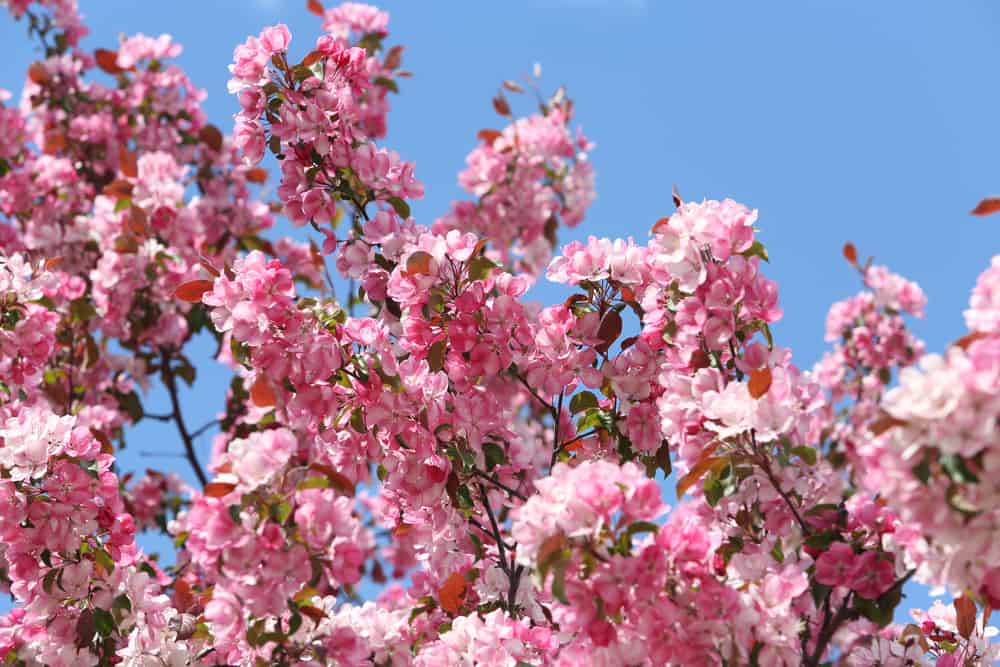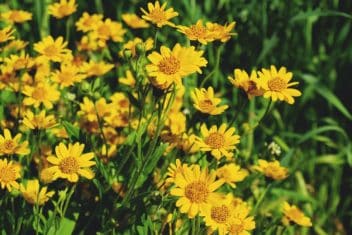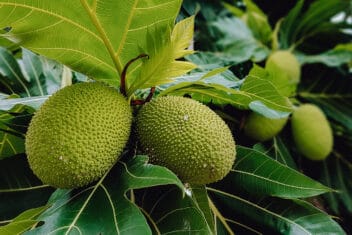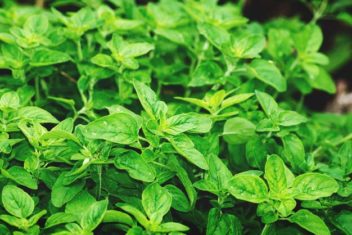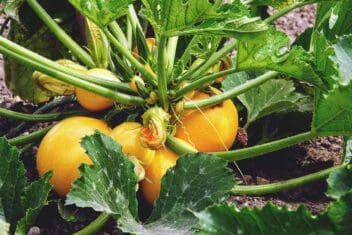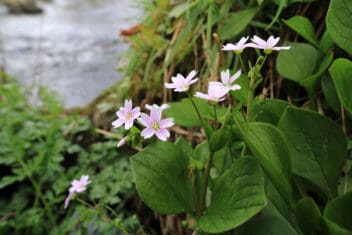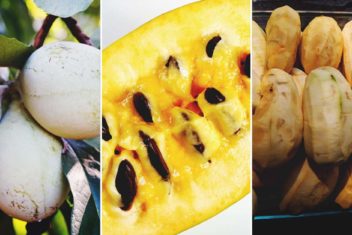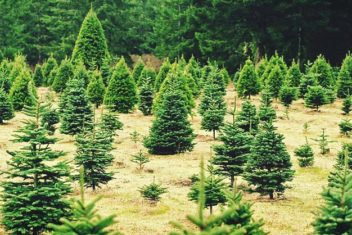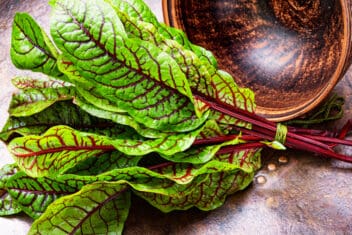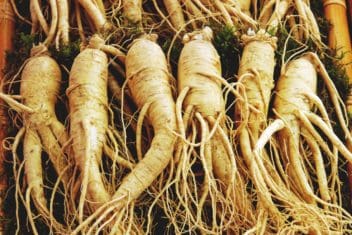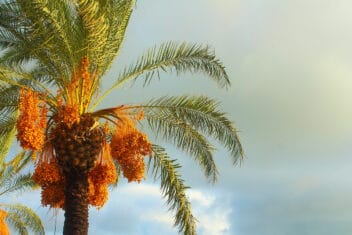Crabapples don’t get the respect and appreciation that they deserve. These small, sour cousins to the sweet Malus apples we transform into pies and crumbles may not have the same sugar content, but they’re invaluable for the homestead nonetheless!
They’re edible, beautiful, and attract pollinators by the hundreds.
Here’s how to cultivate these multi-purpose beauties.
Why Grow Crabapples?
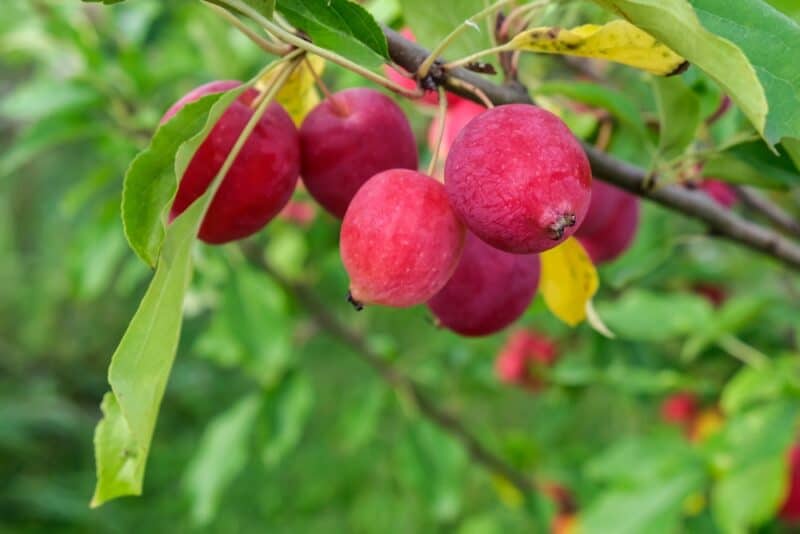
Before we get into the techniques for successfully growing crabapples, we should determine why they benefit the homestead.
One of the greatest benefits of growing crabapples is that they’re excellent companion plants. Like other rose (Rosaceae) family members, their flowers are invaluable for attracting pollinators.
If you grow food guilds around these trees, butterflies, bees, and hummingbirds will pollinate all the plants around it. Alternatively, you can plant crabapples around the periphery for a similar effect.
Another benefit is its use in canning jams and jellies. Crabapples are incredibly high in pectin. This natural starch is used as a binding and thickening agent in all manner of spreads and other preserves.
This is ideal if you don’t have access to store-bought pectin or if you prefer to be as self-sufficient as possible.
Finally, they can also be an excellent food source. Although they may not be as sweet as species grown for fresh eating or baking, that doesn’t mean they’re inedible.
Their fruits are tart and mealy but can easily be turned into applesauce or jelly with sugar or honey. They’re great for making cider, and species like Malus coronaria are sweet enough to eat raw.
How to Choose the Right Variety
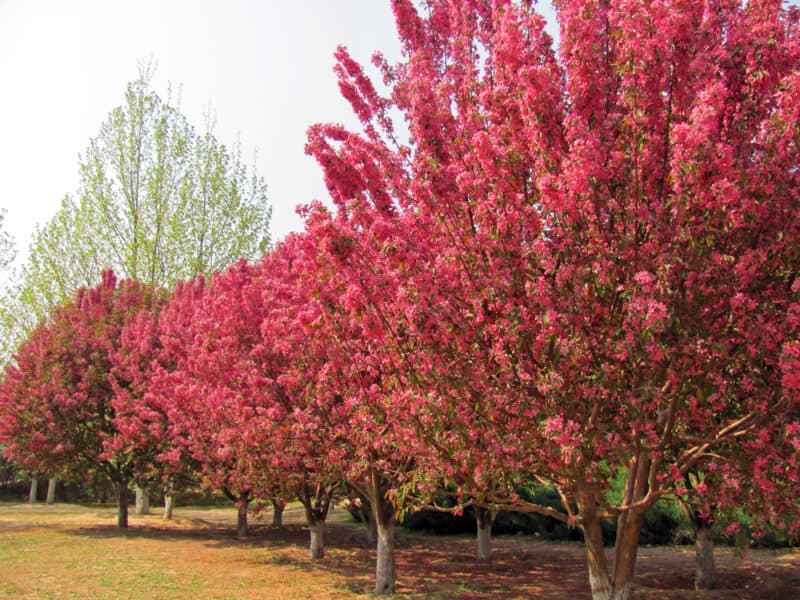
Like all other plant species, crabapples indigenous to your area will thrive the best. If you aren’t fond of any local species, aim for those cultivated in a similar growing zone.
For example, crabapples that thrive well in northern Illinois should also do fine in eastern Oregon because they’re in the same growing zone.
Next, consider the time investment you’d like to put into your trees. Depending on the cultivar, they can live anywhere from 20 to 60 years. Aim for a longer-lived species if you plan to stay on your current property for the rest of your life.
In contrast, if there’s a move in your future or you want to try out different species over the next 50+ years, then aim for one with a shorter lifespan.
Do research to determine which illnesses local crabapple trees suffer from (if any), and then try to find cultivars resistant to those issues. We’ll touch upon that a bit more later.
Wherever it is that you live, aim to buy cultivars that are best suited to your climate and local environment. Buy disease-resistant crabapples whenever possible, and be diligent about checking them regularly for potential pathogenic illnesses.
‘Adirondack’ and ‘Prairifire’ cultivars are two of the most disease-resistant ones out there but do your research to see whether they’ll thrive in your area.
Soil and Sun Requirements
Location is crucial! Like other apple species, crabapples cannot thrive in alkaline soil. Instead, they need rich, well-draining, acidic soil with a pH level between 6.0 and 8.0. Said soil needs to be nutrient-rich, so work in plenty of aged compost and peat moss before planting.
Secondly, you’ll need to choose a site that gets full sun for at least six hours a day. These trees love sunshine; the more they get, the better they’ll fare.
As far as planting goes, this depends on whether you’re planting a cutting, or a bare-root tree. Cuttings can be planted anywhere between late Spring and early Autumn. In contrast, bare-root trees can only be planted in springtime.
Dig a hole a little over 2 feet deep and twice the depth of your tree’s root ball. Add compost and peat moss, gently place the root, then add more amended soil. Pat it down firmly and water well.
Watering and Feeding
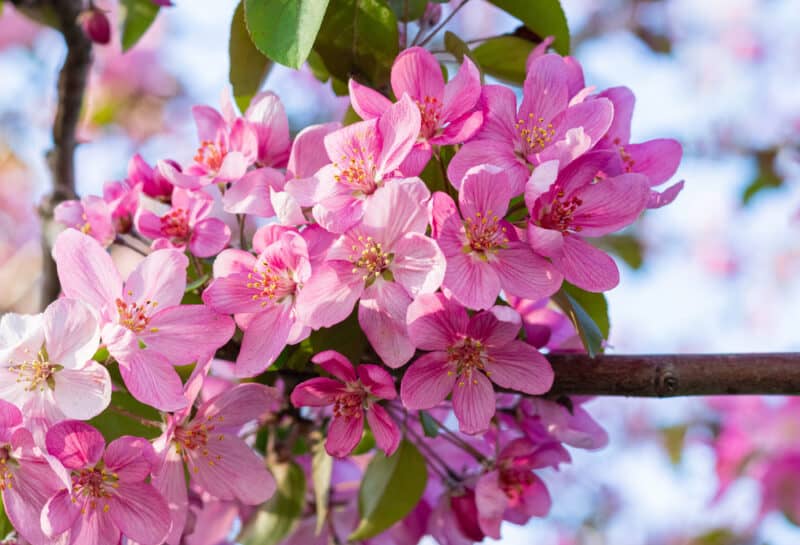
You’ll need to water in your new trees when you first plant them, but aside from that, they can simply be watered by regular rainfall. You only need to worry about offering them additional water during hot, dry periods. Of course, if you live in an area prone to drought, you may want to drench their roots periodically to keep them healthy.
You don’t need to feed your crabapple trees as long as you amended the soil well before planting. If you feel that the soil is depleted, however, you can work some slow-release fertilizer into the surrounding area.
Aim for one with higher phosphorous (P) and potassium (K) rather than nitrogen. If you add too much nitrogen nearby, the trees will develop a lot of foliage, but few fruits.
Propagation
If you aren’t buying more crabapple trees from a local nursery, then you can propagate your own via stem cuttings. In fact, this is the most common way to propagate these trees.
You can take softwood cuttings once new growth appears on your crabapple trees. This usually happens in late spring or early summer. Use clean garden snips to take an 8″ cutting from the end of one of the crabapples’ branches after the blossoms have disappeared and the leaves have come in.
Cut the stem diagonally about 1/2″ below the lowest leaf set with a sharp knife. Then remove the leaves, dip the cut end into rooting hormone, and plant the cutting in a container filled with a 1:1 ratio of peat moss and coarse horticultural sand.
Water in well, and place the container in a place that gets filtered sunshine. It’ll wilt before it can root if it gets too much direct light.
Keep the soil damp, and mist the cutting’s aerial parts daily. After a month has passed, pull on the cutting gently to see if it comes free. If it doesn’t, that means it has developed roots. Allow this process to continue, and transplant it into the soil the following autumn. Protect it from winter snow and herbivore predation, and let it mature in situ from there on.
Potential Problems and Solutions
When deciding which crabapples to plant, look for those that have been cultivated to be disease-resistant. Like other Malus species, these trees can be susceptible to various blights and other health issues.
Consult with an arborist if there are any issues you feel you can’t handle yourself and offer them protection from deer until they mature. In turn, your trees will provide you with luscious, sweetly scented flowers and fabulous fruits year after year.
Some of the most common issues include:
Powdery Mildew
Anyone who’s dealt with powdery mildew knows how frustrating it can be. It thrives in hot, humid conditions and can annihilate an entire crop within days. If you’ve dealt with powdery mildew before, you’ll need to treat the surrounding soil and let it lie fallow for a while before planting anything new there.
Fire Blight
This is a bacterial blight that also thrives in high heat and humidity. It’s most common in apple and crabapple trees but can also afflict hawthorns and rowans (mountain ashes). If you live in a damp, hot climate, buy cultivars bred to resist this pathogen.
Apple Scab
In contrast to fire blight, which requires heat and humidity to thrive, apple scab does best in areas that get long, cold, damp spring and early summer weather. It causes the trees to lose almost all of their foliage, and the fruits develop black, ugly, rotten spots.
Basically, it renders the fruit inedible and nullifies all the pollinating benefits.
Cedar Apple Rust
This fungal infection is quite rare but can spring up in areas that have a lot of junipers planted around. If you’ve previously had juniper bushes on your property, or have them growing within 100 feet of your plant crabapple site, try to find a cultivar that’s specifically resistant to this issue.
In addition to these issues, crabapples can also succumb to predation. Tent caterpillars often nest in crabapple trees but don’t cause permanent damage. They’ll defoliate parts of it and then be on their way.
In contrast, deer and rabbits love to devour juvenile Malus species. If you’ve had issues with these herbivores before, you’ll need to cage your trees until they’re at least a few years old and can withstand being nibbled.
Best Uses
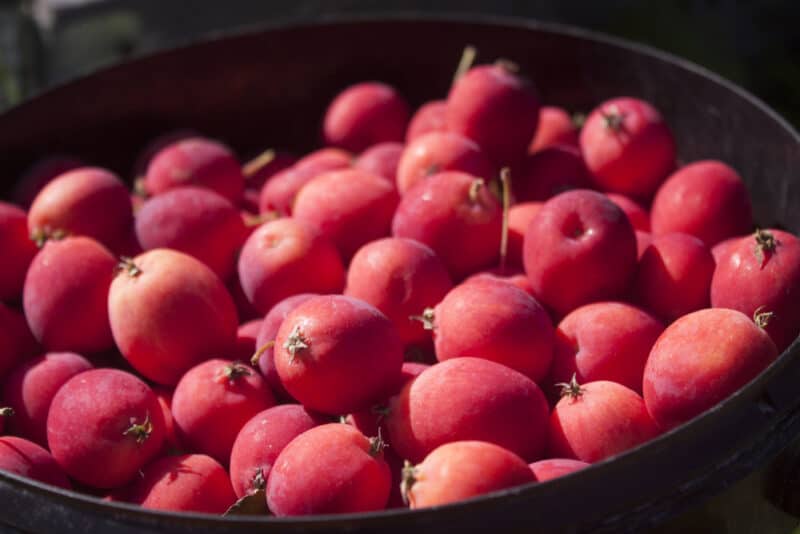
Crabapples are one of those trees that serve multiple purposes. You can plant them for their ornamental value in the garden because the blossoms in the spring are incomparable.
The apples themselves aren’t as sweet as traditional apples, but boy, are they delicious if you prepare them right. The pectin content makes them perfect for making jams and jellies.
Or, you can just grow them to attract pollinators to your orchard. They make excellent companion plants that way.
